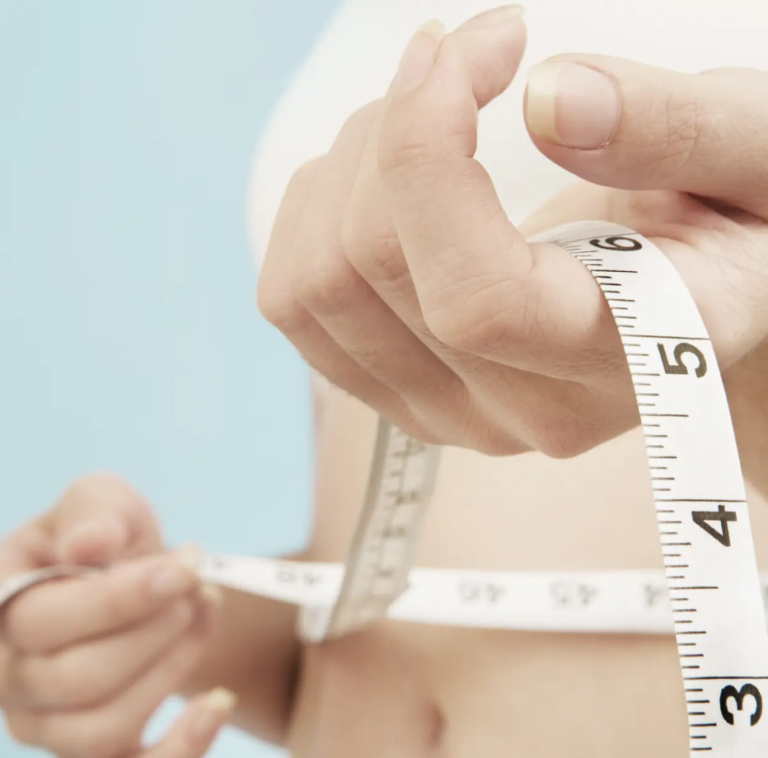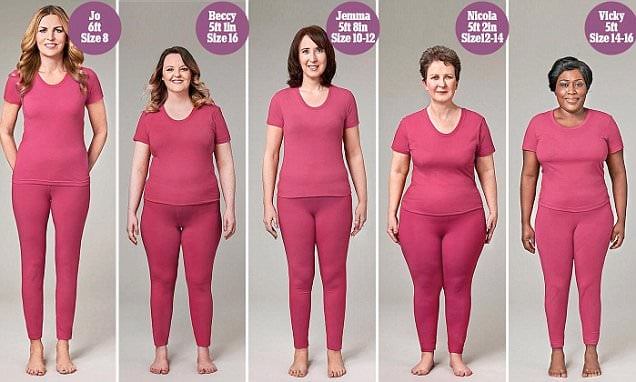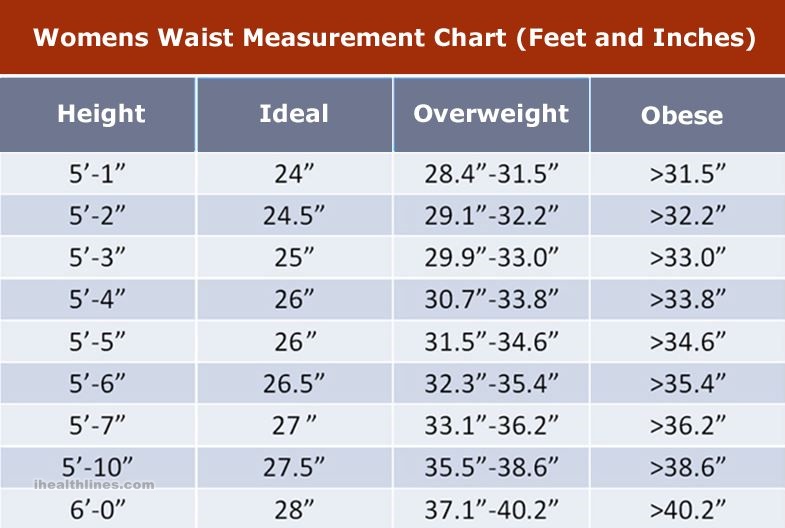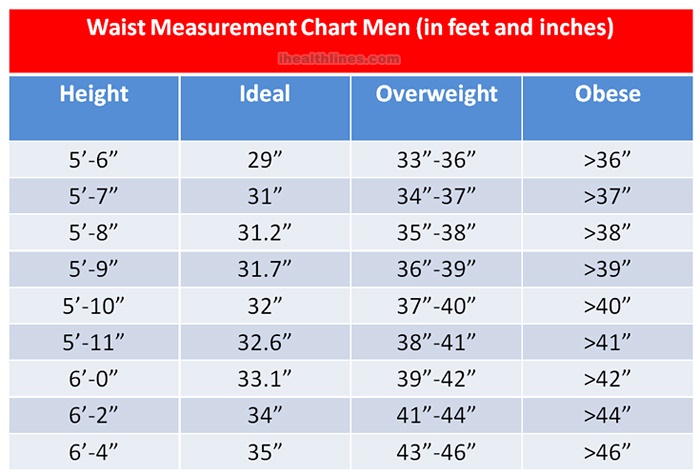
The average waist size is a numerical measurement of the circumference of the waist that is used to gauge the body size and overall health of an individual. A person’s waist size is typically measured at the narrowest point between the hips and the ribcage. Waist circumference is an important measure because it is strongly linked to various health risks. It includes type 2 diabetes, cardiovascular disease, and certain cancers.
The average waist size varies depending on a variety of factors, including age, gender, ethnicity, and lifestyle. For example, men tend to have larger waist sizes than women and older adults generally have larger waist sizes than younger individuals. Ethnicity also plays a role, with some ethnic groups, such as South Asians, having a higher risk of health problems associated with increased waist size.
Monitoring waist size is an important aspect of maintaining overall health and reducing the risk of various health problems. It is recommended that individuals maintain a waist size below a certain threshold, typically 40 inches for men and 35 inches for women, to reduce their risk of health problems associated with increased waist size.
Therefore, keep reading the article to learn more about average waist size.
Contents
- What is the average waist size for women?
- What is the average waist size for a teenage girl?
- What is the average male waist size?
- What is the average waist size for a teenage boy?
- Waist circumference chart (women)
- Waist circumference chart (men)
- Waist measurement chart (adolescent girls)
- Waist measurement chart (adolescent boys)
- Ideal waist circumference by height
- What is a normal waist size for a 4′11″ woman?
- What is the ideal waist size for a 5′1″ woman?
- What is the ideal waist size for a 5′2″ woman?
- What is a normal waist circumference for a 5′3″ woman?
- What is a good waist size for a 5′4″ woman?
- What is the ideal waist size for a 5′5″ woman?
- What is the average waist size for a 5′6″ woman?
- What is the ideal waistline measurement for a 5′7″ woman?
- What is a healthy waist circumference for a 5′8″ person?
- What is a good waist size for a 5′9″ person?
- What is the average waist size for a 5′10″ man?
- What is the average waist size for a 6-foot male?
- What is considered a small waist?
- How to measure your waist circumference correctly?
- Frequently Asked Questions (FAQs)
- What is a healthy waist size for women?
- What is a healthy waist size for men?
- Is there such a thing as a perfect waist size?
- What is the average model waist size?
- What is considered a large waist size?
- How can you measure your waist without a tape measure?
- How can you achieve a healthy waist circumference?
- What is the average UK waist size?
- Where can I learn more about waistline sizes?
- Conclusion
- Related
What is the average waist size for women?
The average waist size for women varies depending on various factors such as age, height, and body type. However, in the United States, the average waist size for adult women is around 38 inches. This measurement is taken at the narrowest point between the hips and the ribcage. It is important to note that having a waist size above 35 inches puts women at an increased risk of developing health problems such as diabetes and heart disease.

Women should keep their waist size below 35 inches to lower health risks. However, waist size alone is not a sufficient indicator of health. BMI, exercise, and diet also matter for overall well-being.
What is the average waist size for a teenage girl?
The average waist size of a teenage girl varies based on age, height, and body type. WHO found that 14-17-year-old girls have an average waist circumference of 30 inches. However, healthy waist sizes for teenage girls differ, taking individual factors like height and body type into account.
Promoting a healthy body image is important, rather than emphasizing weight or waist size alone. Encouraging healthy habits like exercise, a balanced diet, and positive self-image can benefit teenage girls’ well-being.
What is the average male waist size?
The average waist size for men varies depending on various factors such as age, height, and body type. In the United States, the average waist size for adult men is around 40 inches. This measurement is taken at the narrowest point between the hips and the ribcage. Men with waist sizes above 35 inches are at high risk of developing health issues like diabetes and heart disease.
Men should keep their waist size below 35 inches to lower health risks. Waist size alone is not a sufficient indicator of health. Body mass index (BMI), exercise, and diet also matter for overall well-being.
What is the average waist size for a teenage boy?
The average waist size for a teenage boy changes depending on age, height, and body type. WHO research reveals that boys aged 14-17 years old have an average waist circumference of around 31 inches. There is a wide range of healthy waist sizes for teenage boys, with height and body type being key factors to consider.
Promoting healthy habits like regular exercise, balanced diet, and positive body image can lower health risks for teenage boys. Encouraging a healthy lifestyle that includes physical activity and healthy eating habits is beneficial to their overall well-being.
Waist circumference chart (women)
A waist circumference chart for women can be a useful tool in monitoring health and identifying potential health risks. As per the National Institutes of Health (NIH), women with a waist circumference of 35 inches or more have a high risk of developing health problems. They will develop problems like diabetes, heart disease, and high blood pressure. 30-34 inches are at moderate risk, while below 30 inches are at low risk.

Note that waist circumference alone isn’t enough to determine health; BMI, exercise, and diet are also important. To promote overall health and well-being, it’s important to maintain a balanced diet, engage in regular physical activity, and consult with a healthcare provider.
Waist circumference chart (men)
A waist circumference chart for men can be a useful tool in monitoring health and identifying potential health risks. The National Institutes of Health (NIH) say that men with a waist size of 40 inches or more have a higher chance of getting sick with problems like diabetes, heart disease, and high blood pressure. If a man’s waist size is between 35 and 39 inches, it’s still risky, but not as much. Men with a waist size below 35 inches are at the lowest risk of getting these health problems.

Remember, just measuring your waist isn’t enough to know if you’re healthy. Eating good food, exercising, and talking to your doctor are all important things to do to stay healthy.
Waist measurement chart (adolescent girls)
Waist measurement charts for adolescent girls can be helpful in assessing health and identifying potential health risks. The Centers for Disease Control and Prevention (CDC) say that most girls aged 6-11 years old have a waist that is about 25 inches around. For girls aged 12-19 years old, the average waist size is about 29 inches. But, we should remember that everyone is different, so height and body type also matter when we check the waist size.
If a teenage girl’s waist size is bigger than most girls her age, it could mean she’s at risk for health problems like being too heavy or having diabetes. That’s why it’s important to exercise, eat healthy foods, and feel good about her body to stay healthy.
Waist measurement chart (adolescent boys)
Assessing health and identifying potential health risks can be aided by waist measurement charts for adolescent boys. Centers for Disease Control and Prevention (CDC) data shows that the average waist circumference for boys aged 6-11 years old is roughly 25 inches, while for those aged 12-19 years old, it is about 32 inches.
Nevertheless, it is worth noting that individual factors, such as body type and height, should be considered when interpreting waist circumference measurements.
An adolescent boy with a waist circumference above the 85th percentile is considered at risk for obesity and diabetes.
Ideal waist circumference by height
Everyone has different waist sizes that are okay for them. This is because people come in all shapes and sizes. However, the American Heart Association (AHA) suggests that women try to keep their waist size below 35 inches and men should try to keep their waist size below 40 inches. This can help them stay healthy and reduce their chances of getting heart disease or type 2 diabetes.
Some studies say that how big your waist is should be related to how tall you are. They recommend having a waist-to-height ratio of 0.5 or less to help lower your risk of health problems.
What is a normal waist size for a 4′11″ woman?
Everyone’s body is unique, so there is no one perfect waist size that works for everyone. It depends on things like how tall you are and what your body is like. But for women, it’s usually best to have a waist that measures less than 35 inches to help lower the chance of getting sick with things like heart disease and type 2 diabetes. And if someone is shorter than most people, their waist might be smaller too!
It’s important to remember that just measuring waist size is not enough to know if someone is healthy. We also need to think about things like the food they eat, how much they exercise, and their medical history.
What is the ideal waist size for a 5′1″ woman?
Everyone is different, and so is their waist size. Some people have smaller waists than others because of their height and body shape. But it’s usually better for women to have a waist size below 35 inches to stay healthy and avoid getting sick with heart disease or type 2 diabetes. For example, a woman who is 5 feet and 1 inch tall might have a smaller waist than someone who is taller.
Nevertheless, it is important to note that waist size alone is not always an accurate indicator of overall health and should be considered in conjunction with other factors such as diet, exercise, and medical history.
What is the ideal waist size for a 5′2″ woman?
Waist size is different for everyone, and it depends on things like how tall you are and how healthy you are. Health experts advise most women to keep their waist size below 35 inches to avoid getting sick with heart problems and type 2 diabetes.
Sometimes, women who are shorter in height, like 5’2″, may have a smaller waist size compared to other women because of their petite bodies. But it’s important to remember that only measuring waist size is not always enough to know if someone is healthy. Other things like eating healthy foods, exercising, and a person’s medical history are also important to consider.
What is a normal waist circumference for a 5′3″ woman?
The ideal waist circumference for a woman who is 5’3″ may depend on various factors such as body type, overall health, and age. Although experts generally recommend that women aim for a waist circumference below 35 inches to reduce their risk of developing health problems like heart disease and type 2 diabetes, the “normal” waist circumference for a woman who is 5’3″ may differ due to individual factors. However, it’s essential to note that waist circumference alone does not always provide a complete picture of one’s health status.
Consider it along with other factors such as physical activity level, diet, medical history, and overall health.
What is a good waist size for a 5′4″ woman?
Although experts generally recommend that women maintain a waist circumference below 35 inches to reduce the risk of developing health issues like heart disease and type 2 diabetes, there is no single “good” waist size that is suitable for everyone. However, for a 5’4″ woman, the ideal size or dimensions of the waistline may differ based on various factors such as age, body type, and overall health.
It is important to remember that waist circumference alone may not provide a complete picture of one’s health status, and it should be assessed in conjunction with other factors such as physical activity level, diet, and medical history.
What is the ideal waist size for a 5′5″ woman?
The ideal waist size for a 5’5″ woman can vary depending on several factors, including body type, age, and overall health. Health experts generally recommend women to maintain a waist circumference below 35 inches to reduce the risk of developing health problems like heart disease and type 2 diabetes, although there is no one-size-fits-all answer.
However, it is important to note that waist circumference alone does not provide a complete picture of one’s health status and should be considered in conjunction with other factors such as diet, exercise, and medical history. Consulting with a healthcare professional can help to determine a healthy size or dimensions of the waistline for a 5’5″ woman based on her individual circumstances.
Maintaining a healthy lifestyle that includes regular physical activity and a balanced diet can also help to reduce the risk of developing health problems associated with increased waist size.
What is the average waist size for a 5′6″ woman?
The average waist size for a 5’6″ woman can vary depending on factors such as body type and overall health.
The National Health and Nutrition Examination Survey (NHANES) conducted a study that found that women aged 20-39 and with a height of 5’6″ have an average waist circumference of approximately 31.5 inches.
It is important to note that waist circumference alone is not always an accurate indicator of overall health and should be considered in conjunction with other factors such as diet, exercise, and medical history.
What is the ideal waistline measurement for a 5′7″ woman?
There is no single ideal waistline measurement for a 5’7″ woman, as it can vary based on factors such as age, body type, and overall health. Women should generally maintain a waist circumference below 35 inches to reduce their risk of developing health problems such as heart disease and type 2 diabetes. It is important to note that waist circumference alone is not always an accurate indicator of overall health and should be considered in conjunction with other factors such as diet, exercise, and medical history.
What is a healthy waist circumference for a 5′8″ person?
Individuals have varied healthy waist circumferences depending on height, body type, and overall health. For women, a waist circumference below 35 inches is recommended to minimize health risks.
The ideal waist circumference for a 5’8″ person varies depending on age, gender, and overall health. It is advisable to consult a healthcare provider to determine an individual’s healthy waist circumference based on their unique circumstances.
What is a good waist size for a 5′9″ person?
The ideal waist size for a 5’9″ person may vary based on factors such as body type, age, and overall health. However, a waist circumference below 40 inches is generally recommended for men to reduce their risk of developing health problems such as heart disease and type 2 diabetes. For women, a waist circumference below 35 inches is recommended.
It is important to note that waist circumference alone does not always provide a complete picture of one’s health status and should be considered in conjunction with other factors such as physical activity level, diet, and medical history.
What is the average waist size for a 5′10″ man?
The average waist size for a 5’10” man can vary depending on several factors, including body type and overall health. CDC reports that the average waist circumference for adult men in the US is about 40 inches. However, one’s health status is not wholly reliant on waist circumference alone. Physical activity level, diet, and medical history should also be considered alongside it.
What is the average waist size for a 6-foot male?
For a 6-foot male, the average waist size differs due to age, body type, and overall health. Nevertheless, CDC suggests that adult men in the US have an average waist circumference of 40 inches. Above 40 inches is risky for health issues like heart disease and type 2 diabetes.
To decrease the likelihood of developing health issues, sustaining a healthy girth or circumference of the midsection via regular exercise, healthy eating, and routine medical check-ups is essential.
What is considered a small waist?
The definition of a small waist may vary depending on the individual’s height, body type, and overall health. Generally, a waist circumference of fewer than 35 inches for women and less than 40 inches for men is considered small. However, it is important to note that waist size alone is not always an accurate indicator of overall health and should be considered in conjunction with other factors such as diet, exercise, and medical history.
How to measure your waist circumference correctly?

To measure your waist circumference correctly, follow these steps:
- Find the top of your hip bone and the bottom of your ribcage.
- Breathe out naturally and wrap a measuring tape around your waist, positioning it midway between these points.
- Make sure the measuring tape is snug but not so tight that it digs into your skin.
- Read the measurement in inches or centimeters.
- Repeat the measurement a few times to ensure accuracy and take an average of the readings.
- Note that the waist measurement should be taken without clothing, as thick layers of clothing can affect the accuracy of the measurement.
Frequently Asked Questions (FAQs)
What is a healthy waist size for women?
A healthy waist size for women can vary depending on various factors such as height, body type, and overall health. However, generally, a waist circumference below 35 inches is recommended to reduce the risk of developing health problems such as heart disease and type 2 diabetes. It is also important to note that waist circumference alone is not always a complete indicator of one’s health status and should be considered in conjunction with other factors such as physical activity level, diet, and medical history.
Consulting with a healthcare professional can help determine a healthy waist size for women based on their individual circumstances. Regular physical activity and a balanced diet can also help maintain a healthy size or dimensions of the waistline and reduce the risk of developing health problems associated with increased waist size.
What is a healthy waist size for men?
Healthy waist size for men can vary depending on factors such as age, height, and overall health. However, as a general guideline, a waist circumference of fewer than 40 inches (102 cm) is recommended for men to minimize the risk of health problems such as heart disease and type 2 diabetes. Men who have a waist circumference greater than 40 inches (102 cm) may have an increased risk of developing these health conditions.
However, waist circumference alone may not provide a complete picture of overall health, and it should be considered along with other factors such as exercise, diet, and medical history. It is recommended to consult with a healthcare professional to determine an individualized healthy waist size for men.
Is there such a thing as a perfect waist size?
While there is no single “perfect” waist size that applies to all individuals, maintaining a healthy waist circumference is important for overall health. Waist circumference is a useful tool for assessing abdominal fat, which has been linked to an increased risk of health problems such as heart disease, type 2 diabetes, and certain cancers. However, ideal waist size can vary based on factors such as height, age, body type, and overall health.
It is important to note that the measurement of the circumference of the waist alone is not always an accurate indicator of overall health and should be considered in conjunction with other factors such as diet, exercise, and medical history. Therefore, consulting with a healthcare provider can help to determine a healthy waist size for an individual based on their unique circumstances.
What is the average model waist size?
The average model waist size can vary depending on the industry and specific modeling niche. In general, high fashion and runway models tend to have smaller waist sizes than commercial models, as the former often requires a certain body type and measurements to fit sample sizes.
Fashion industry criticized for promoting unrealistic beauty standards & unhealthy body ideals. Models speak out against extreme thinness & advocate for diversity & representation. Focusing on models’ waist size may not be healthy or accurate for assessing healthy waist size.
What is considered a large waist size?
Large waist size can be an indicator of excess body fat, which increases the risk of developing several health problems. Men should generally keep their waist circumference below 40 inches, while women should aim for a waist circumference below 35 inches. However, these guidelines may differ depending on factors such as height and body type. It’s essential to remember that waist circumference alone may not always be an accurate indicator of overall health, and other factors such as diet, physical activity level, and medical history should also be taken into account. Consulting with a healthcare provider can help to determine whether an individual’s waist size is a cause for concern.
How can you measure your waist without a tape measure?
Use a string or ribbon as an alternative to a tape measure by wrapping it around the waist and measuring it with a ruler. Another method is to use a piece of paper or belt to mark the waistline and measure it. Note that alternative methods may not be as accurate and may lead to slightly different measurements compared to a tape measure.
How can you achieve a healthy waist circumference?
Achieving a healthy waist circumference involves adopting a healthy lifestyle that includes regular exercise, a balanced diet, and proper hydration. To achieve a healthy waist circumference, you can start by incorporating aerobic and strength training exercises into your routine. Aerobic exercises such as running, cycling, or swimming can help burn fat and reduce your waistline. Weightlifting or bodyweight exercises can build lean muscle mass and reduce the waistline. A balanced diet rich in fruits, veggies, whole grains, and lean proteins can promote a healthy weight. It can also reduce excess body fat. Drinking enough water and getting enough restful sleep is also important for achieving a healthy waist circumference.
What is the average UK waist size?
The average waist size in the UK varies based on gender, age, and other factors. According to a study by the British Journal of Nutrition, the average waist size for men in the UK is around 37 inches. Conversely, for women, it is approximately 33 inches. However, these averages may vary depending on factors such as age, lifestyle habits, and overall health.
Waist circumference is only one aspect of health, so consider diet, exercise, and medical history. A healthy waist circumference can lower the risk of health problems like diabetes, heart disease, and stroke.
Where can I learn more about waistline sizes?
To gain more knowledge about waistline sizes and compare your waist measurement, you may refer to our other articles dedicated to several common waist sizes.
- 14 inch waist
- 15 inch waist
- 16 inch waist
- 17 inch waist
- 18 inch waist
- 19 inch waist
- 20 inch waist
- 21 inch waist
- 22 inch waist
- 23 inch waist
- 24 inch waist
- 25 inch waist
- 26 inch waist
- 27 inch waist
- 28 inch waist
- 29 inch waist
- 30 inch waist
- 31 inch waist
- 32 inch waist
- 33 inch waist
- 34 inch waist
- 35 inch waist
- 36 inch waist
- 37 inch waist
- 38 inch waist
- 40 inch waist
- 42 inch waist
- 50 inch waist
Conclusion
In conclusion, waist size is an important factor in determining overall health and well-being. A waist circumference of more than 35 inches for women. On the other hand, 40 inches for men is considered to be an increased risk for developing health problems. The health problems are heart disease, type 2 diabetes, and certain cancers. However, the size of the waist alone does not provide a complete picture of one’s health status. Also, it should be considered in conjunction with other factors such as diet, exercise, and medical history.
Average waist size varies based on age, body type, height, and health. Consulting with a healthcare professional can help determine a healthy waist measurement. A personalized approach is necessary to determine the ideal size or dimensions of the waistline based on individual circumstances.
Maintaining a healthy diet and exercise can lead to a healthy waist circumference and lower health risks. Also, monitoring waist size and health metrics regularly can help track progress and make necessary adjustments.
Healthy lifestyle choices are key to achieving and maintaining a fit width or narrowness of the waist and overall health.